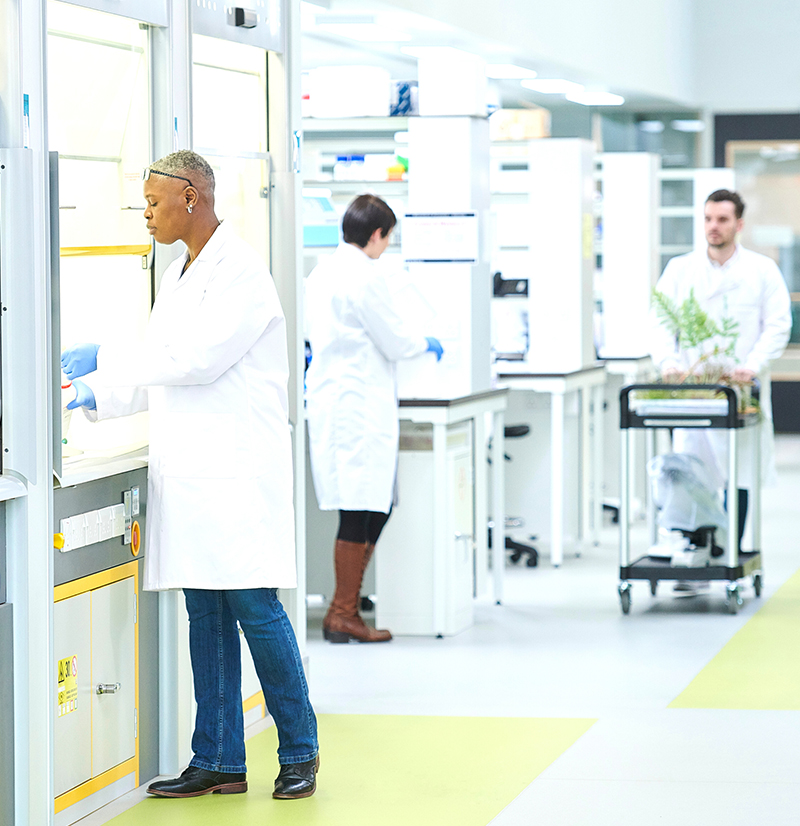In the United States alone there are more than 7 billion lab tests performed annually.1 Controlling the Relative Humidity within the complex environment of a laboratory generates more accurate test
results, prevents contamination, and promotes a healthier work environment for staff.
A primary concern is the prevention of contamination, the potential for the growth of microbes and bacteria increases in an improperly controlled environment. When humidity levels are too low the
potential for static buildup increases allowing contaminants to collect. In unfavorable conditions,
microbes and bacteria reproduce at an exponential rate. This not only impacts testing results but also diminishes the life cycle of expensive equipment. In the United States, there are over 500,000
workers employed in laboratories.2 Relative humidity not only creates a more comfortable environment for workers but also reduces the spread of airborne viruses such as SARS-CoV-2 and the seasonal flu.
Humidity levels that are too high or too low can interfere with test results.
Whether from a brief interval when an HVAC system starts up or season changes, the slightest fluctuation in humidity can affect the accuracy of sensitive testing.
In an overly dry environment, there is potential for static to build up which will allow contaminants to collect on equipment.
In an uncontrolled environment the life span of expensive equipment such as spectrometers and electronic microscopes can be notably reduced.
The use of humidification can help to reduce the spread of viruses like COVID-19 (SARS-CoV-2) and seasonal influenza helping to protect the wellbeing of staff.

Our Vapor-logic electronic controller has been purpose-developed for Dristeem products.